Mangrove Trees
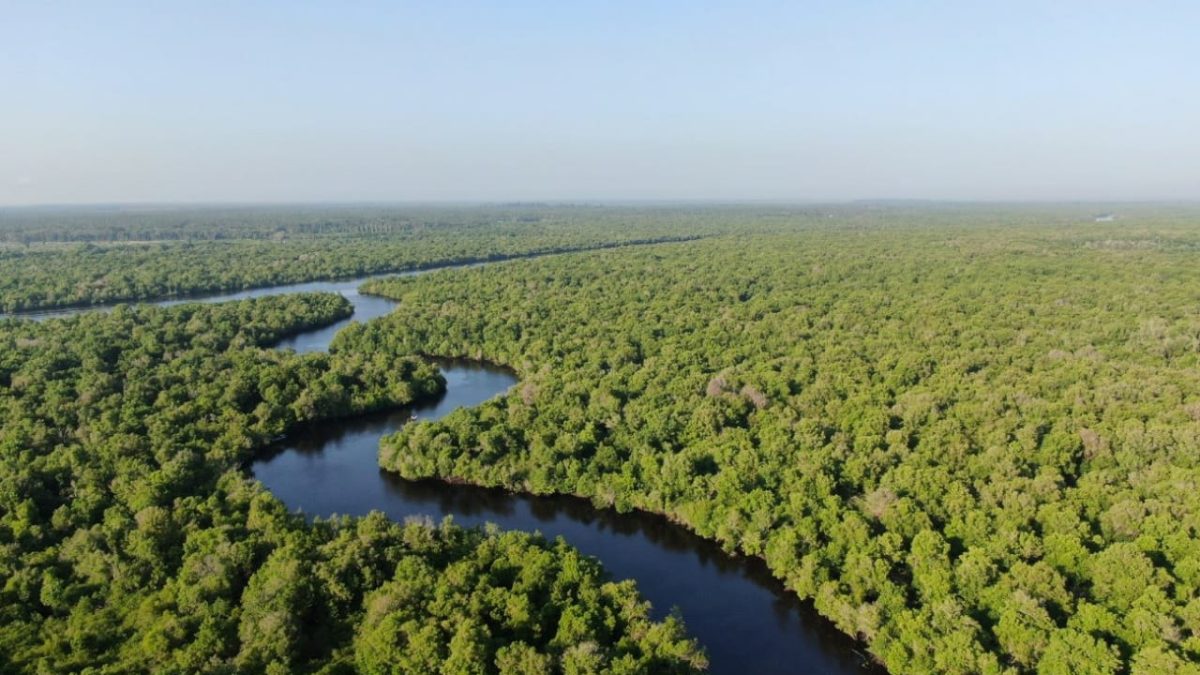
Photo Credit : YKAN
Mangroves are the name of a group of plants of the genus Rhizophora, family Rhizophoraceae. This plant has striking characteristics in the form of large and woody roots, shoots covered with tapered leaves and fruits that germinate and take root while still on the tree (viviparous).
The first characteristic of mangrove plants is the pneumatophore root, which is that this root grows upwards from mud soil and forms a pointed structure that develops above the surface. The function of this pneumatophore clar as the name suggests is to take oxygen from the air (breathe) replacing the limited oxygen in the sediment-rich muddy soil.
The second characteristic is tolerance to High Salt Content. Mangrove trees have the ability to survive in environments with high salt content. They have special mechanisms to get rid of excess salt through their leaves or collect it in old leaves which are then dropped.
Like other plants, mangrove trees also have an important ecological role. They form mangroves that provide habitat for various species of flora and fauna, including fish, birds, crabs and mollusks. Mangroves also serve as coastal abrasion barriers and protection from storms and high waves.
Mangrove trees have the ability to store water in their tissues. This allows them to survive in conditions of prolonged drought or tides.
Come under the Division of Magnoliophyta, Class of Magnoliopsida, Order of Malphigiales, Family of Rhizophoracea, mangroves have several genera, namely:
Genus Rhizophora :
- Rhizophora apiculate (Mangrove Oil)
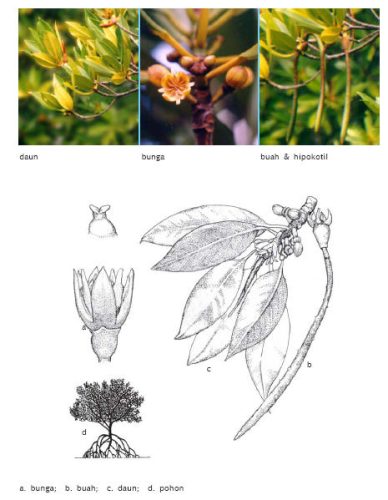
Rhizophora apiculate (Photo Credit : Wetlands)
- Rhizophora mucronata (Black Mangrove)
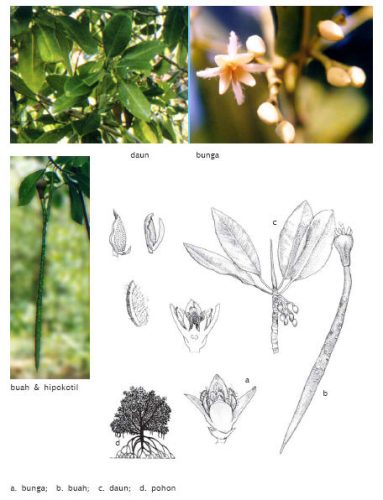
Rhizophora mucronata (Photo Credit : Wetlands)
- Rhizophora stylata (Small Mangrove)
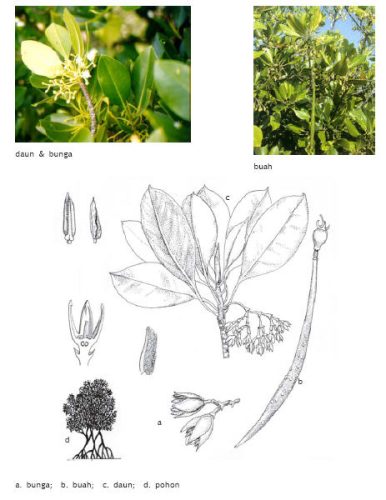
Rhizophora stylata (Photo Credit : Wetlands)
Genus Avicennia :
- Avicennia marina (Fire Mangrove)

Avicennia marina (Photo Credit : Wetlands)
- Avicennia officinalis (Fire Mangrove)
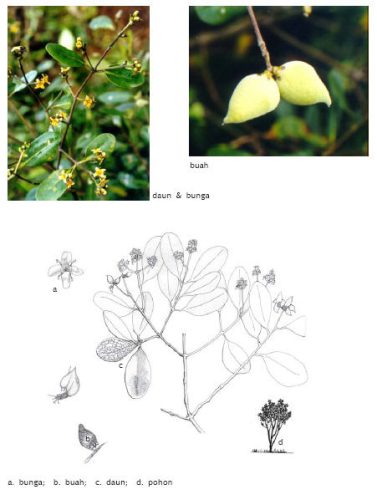
Avicennia officinalis (Photo Credit : Wetlands)
Genus Bruguiera :
- Bruguiera cylindrica (Forest Mangrove)

Bruguiera cylindrica (Photo Credit : Wetlands)
- Bruguiera gymnorrhiza (Forest Mangrove)
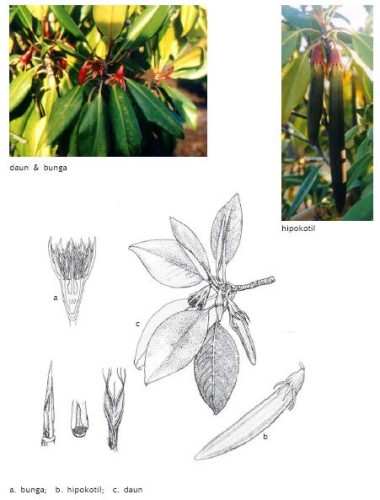
Bruguiera gymnorrhiza (Photo Credit : Wetlands)
Genus Kandelia :
- Kandelia candel (Blind Mangrove)

Kandelia candel (Photo Credit : Wetlands)
Genus Sonneratia :
- Sonneratia alba (Cherry Mangrove)
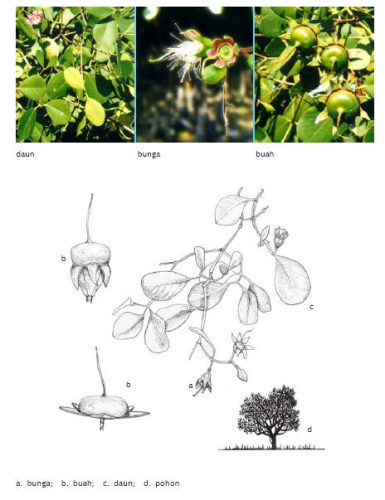
Sonneratia alba (Photo Credit : Wetlands)
- Sonneratia caseolaris (Cherry Mangrove)
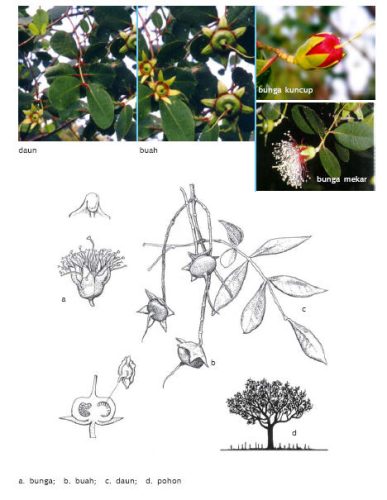
Sonneratia caseolaris (Photo Credit : Wetlands)
Genus Ceriops :
- Ceriops decandra (Blind Mangrove)
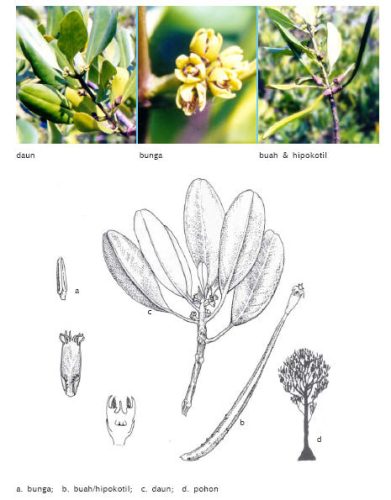
Ceriops decandra (Photo Credit : Wetlands)
Genus Xylocarpus :
- Xylocarpus granatum (Mangrove)
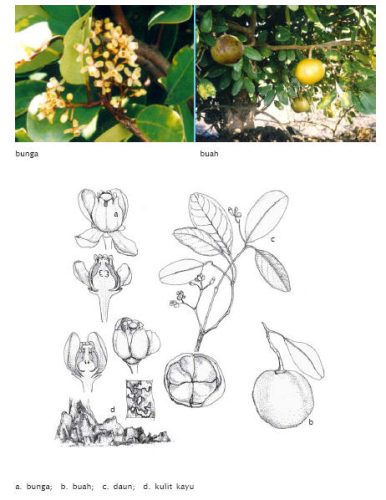
Xylocarpus granatum (Photo Credit : Wetlands)
Rhizophora sp. : one of the most common types of mangroves and is found in many tropical and subtropical regions. They have powerful and towering pneumatophore roots. The leaves are lanceolate, dark green in color with a tapered tip. The fruit is round in shape and green or dark red in color.
Avicennia sp. (Api-api) : Fire mangroves are a smaller type of mangrove and are often found along sandy beaches. They have shorter pneumatophore roots than red mangroves. The leaves are oval-shaped and brownish-green in color. The fruits are cylindrical and brown in color.
Bruguiera sp. : Forest mangroves have shorter, branched pneumatophore roots. The leaves are oval in shape and dark green in color. The fruits are round in shape and green or brown in color.
Kandelia sp. (Buta/Betah/Wetah) : A smaller type of mangrove with lanceolate and blunt-tipped leaves. They have short pneumatophore roots. Blind mangroves often grow in more protected areas and have a higher tolerance to less favorable watery conditions.
Sonneratia sp. (Cherry mangroves) : Type of mangrove that has special aerial roots called "stilt roots". The leaves are oval-shaped and brownish-green in color. The fruit is round in shape and red or orange in color.
Each type of mangrove has unique adaptations to their coastal environment. The diversity of mangrove species is important to maintain a balanced and well-functioning mangrove ecosystem. In addition to having an ecological role, mangroves also have various other uses that are beneficial to humans. Here are some of the uses of mangroves:
- Coastal Protection : Mangroves serve as a natural buffer for coastal abrasion and erosion also provide protection from high waves and storms. Intricate mangrove roots help bind soil and sediment, preventing excessive coastal erosion.
- Carbon Storage : Mangroves contain a lot of carbon. Mangrove roots and muddy soil underneath store large amounts of carbon. It helps reduce the concentration of carbon in the atmosphere and reduce the impact of climate change.
- Wood Supply : Mangrove wood has good hardness and resistance to water and pest attacks. Mangroves are used for various construction purposes, such as buildings, bridges, boats and piles.
- Agriculture and Fisheries : Mangroves provide a place for the cultivation of shrimp, crabs and fish. Mangroves also play a role in nutrient cycling and aquatic productivity.
- Energy and Fuel Sources : Mangroves are also used as energy and fuel sources in the form of firewood or mangrove charcoal. It is an important source of energy for local communities in coastal areas.
- Rope and Webbing Material : Mangrove twigs or roots can be used as materials for making ropes, wickers and traditional crafts such as mats, bags and hats.
- Food Sources : Some parts of mangrove trees, such as fruit, young leaves, or roots, can be used as a food source in some local cultures. Cherry mangroves, for example, can be eaten or used as an ingredient for traditional drinks.
- Traditional Medicine : Some types of mangroves have medical value in traditional medicine. Extracts from parts of mangrove trees are used to treat various ailments, such as diarrhea, toothache and skin infections.
- Tourism and Education : Mangroves are also a popular tourist attraction. Tourists can visit mangroves to enjoy natural beauty, see biodiversity and learn about coastal ecology and the importance of mangrove conservation.
Maintaining the sustainability of mangroves and using mangrove resources responsibly is an important thing to maintain sustainability. Conservation and good management are needed to maintain the ecological and socioeconomic benefits of mangrove forests so that they are sustainable without damaging their natural functions.
-YN

